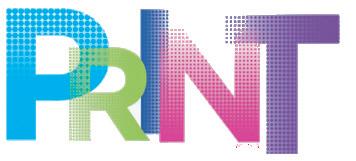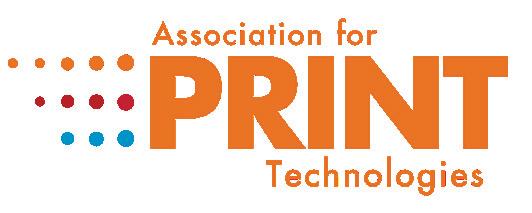
Jami Daniels propels The Daniels Group to success


Jami Daniels propels The Daniels Group to success
Charting New Territory • Q&A with Hassan Igram, CEO, Cedar Graphics
A Stewardship for Print • What the Hell Do We Do Now?

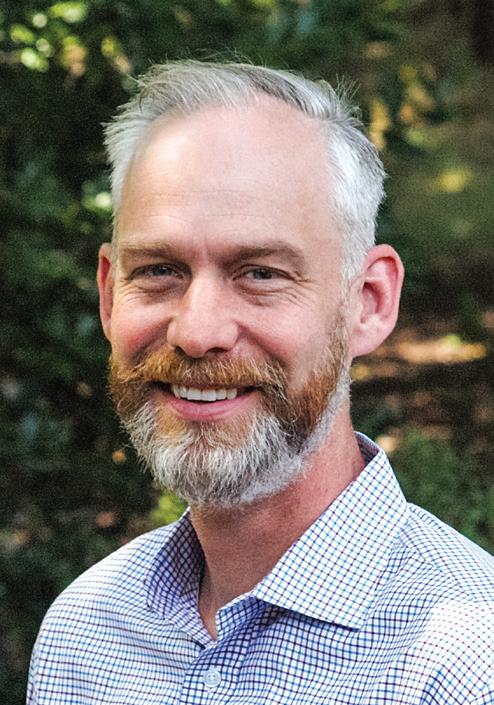
Thayer Long President, Association for PRINT Technologies
I suppose we can feel a bit disadvantaged at this time. We have a deluge of inexpensive digital communication to compete against, dramatically reduced marketing budgets and a worldwide pandemic in our face. I don’t think it is a stretch to say we may all feel somewhat ill-equipped right now.
Our industry has been an underdog amidst the digital onslaught of the past two decades. And while it may seem like COVID-19 magnifies our disadvantage, I would submit to you that it actually provides us with the opportunity of a lifetime. At APTech, we encourage a mindset that embraces challenges and shortcomings. We understand that conventional wisdom preaches that we should avoid disadvantages and that setbacks will leave you worse off than you would be otherwise. We, and our members, will not accept that as the case. It is not outlandish to think that someone is going to emerge from the chaos and do great things. We will, most certainly, read about how they built robust businesses or reinvented themselves within the darkest period in modern history. And I am confident of this because it has happened countless times before. Whether it was during the Great Depression, war or a recession, businesses have always been built in downturns.
Innovation starts with listening to our clients and anticipating what they need.
There are a couple of possible interpretations of this fact. One is that this remarkable group of companies triumphed in spite of their challenges. They were smart, creative and unstoppable. The second—possibly more intriguing—is that they succeeded due to the disadvantage. In other words, they were able to learn something in their struggle that resulted in a significant advantage.
We know that it is difficult to see silver linings in a time like this, but when the world gives you lemons, make chocolate cake. Take the time to answer the questions we are being forced to ask. Use this time to chronicle what you are learning about yourselves and your organizations. That is how you start to turn a disadvantage into an advantage. That is how you become one of those people that take on the challenge, persevere and thrive.
Jami Daniels, CEO of the Daniels Group, will be one of those people. She has her team poised for greatness and you can find inspiration from her story in our cover article. In addition, our feature, "What the Hell Do We Do Now?" compiled advice on how to approach the murky future and move forward. The reality is that nobody knows for certain what will happen, but this piece offers some ideas on how to get moving.
Our industry is advantaged because print can fill the emotional gap that is widening due to the lack of face-to-face interaction. Print has a real role to play and the next generation of workers can help take printers into a new world with new offerings. You can read more about it in our feature, "A Stewardship for Print: Why New Generations Need to Feel the Impact." Enjoy the issue and maybe some chocolate cake!
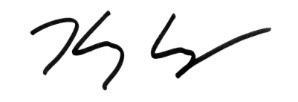
We are proud to announce that LeadingPRINT magazine won the 2020 Platinum Hermes Creative Award for the Spring 2020 issue "Eyes Forward."
2
12 14 18 22 8 4
REGISTRATION MARKS
Facts, figures and data that matters
FULL THROTTLE
Jami Daniels propels The Daniels Group to success
WHAT THE HELL DO WE DO NOW?
How to get the most out of your team
CHARTING NEW TERRITORY
Navigating the changing sales process
INDUSTRY INSIGHTS
Economic outlooks, government issues, news
A STEWARDSHIP FOR PRINT
Why new generations need to feel the impact
Q&A
Hassan Igram, CEO, Cedar Graphics

FALL 2020
Publisher: APTech
LeadingPRINT® magazine is published four times per year by the Association for PRINT Technologies. All rights reserved © 2020.
Association for PRINT Technologies.
Managing Editor: Julie Shaffer
Creative and Editorial: Conduit, Inc. | conduit-inc.com
Find us online
LeadingPRINT.org
PRINTtechnologies.org twitter.com/APT_tech | facebook.com/APTtechorg linkedin.com/company/association-for-print-technologies For advertising opportunities, contact Sondra Benoudiz at sbenoudiz@aptech.org.
Send feedback and story ideas to jshaffer@aptech.org
Please recycle this magazine.
LeadingPRINT® magazine is a benefit of belonging to the Association for PRINT Technologies. To learn how to become a member, contact Sondra Benoudiz at sbenoudiz@aptech.org

"Leaders

always deal with ambiguity—it’s timeless and comes with the job. During crises, ambiguity becomes exponential. As fear becomes contagious across organizations, leaders must manage their own responses to ambiguity."
— Gary Burnison, CEO of Korn Ferry,
on leading through challenging times
Adapt. It’s a term that leaders everywhere held close prior to COVID-19, but now it is non-negotiable. With the constant ups and downs of the world, leaders need to be ready to respond to every unknown. Harvard Business Reviews touts the 4 A’s of adaptive leadership as ways to face the uncertainty head on:
Look ahead to future needs and trends, as well as any possible pitfalls.
State your needs clearly and to the correct people for clarity and support.
Adjust business models and mindsets according to changing factors.
Be transparent about your processes and welcome feedback.
If your company still seems a bit chaotic, you are not alone. The pandemic is still in full swing and whether you’re working from home or returned to the office, things are still far from normal. Employees need to trust that they will be safe when they go back to the workplace, which is detailed in the "2020 Edelman Trust Barometer Special Report: Workplace Trust and the Coronavirus.” The report was updated with new data from August 23 and August 26, 2020 and included over 3,400 respondents from the U.S., U.K., France, Germany, India, South Korea and Singapore. See what employees think regarding the pandemic and their workplaces:
70% 51% 31% 68%
agree that their employers have effectively communicated how they are approaching returning to the workplace

trust corporate offices are safe given the current situation are likely to enter a corporate office in the next three months
believe there will be a second wave of the coronavirus in their country
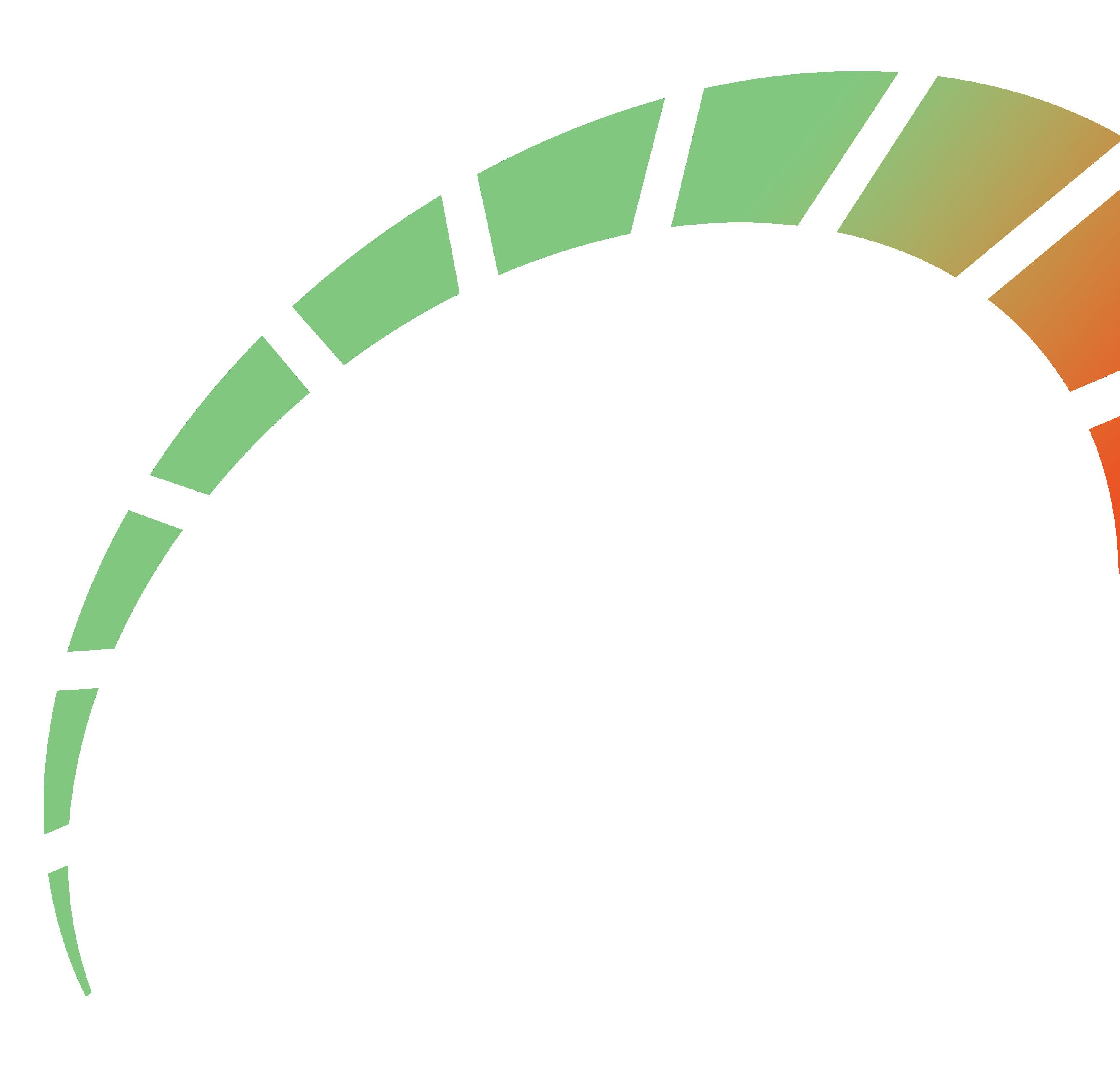
Jami Daniels propels The Daniels Group to success
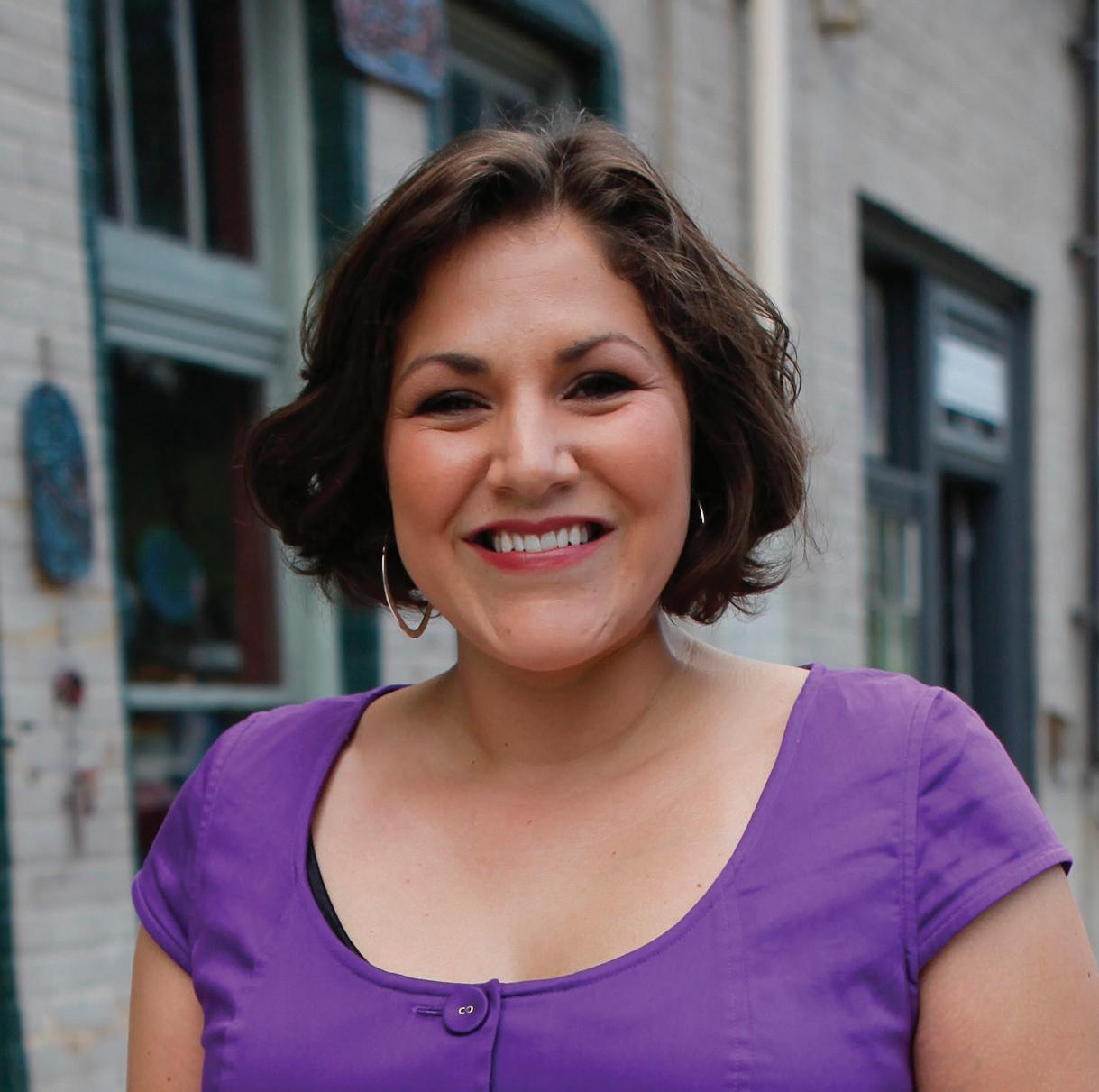
By Jami Daniels
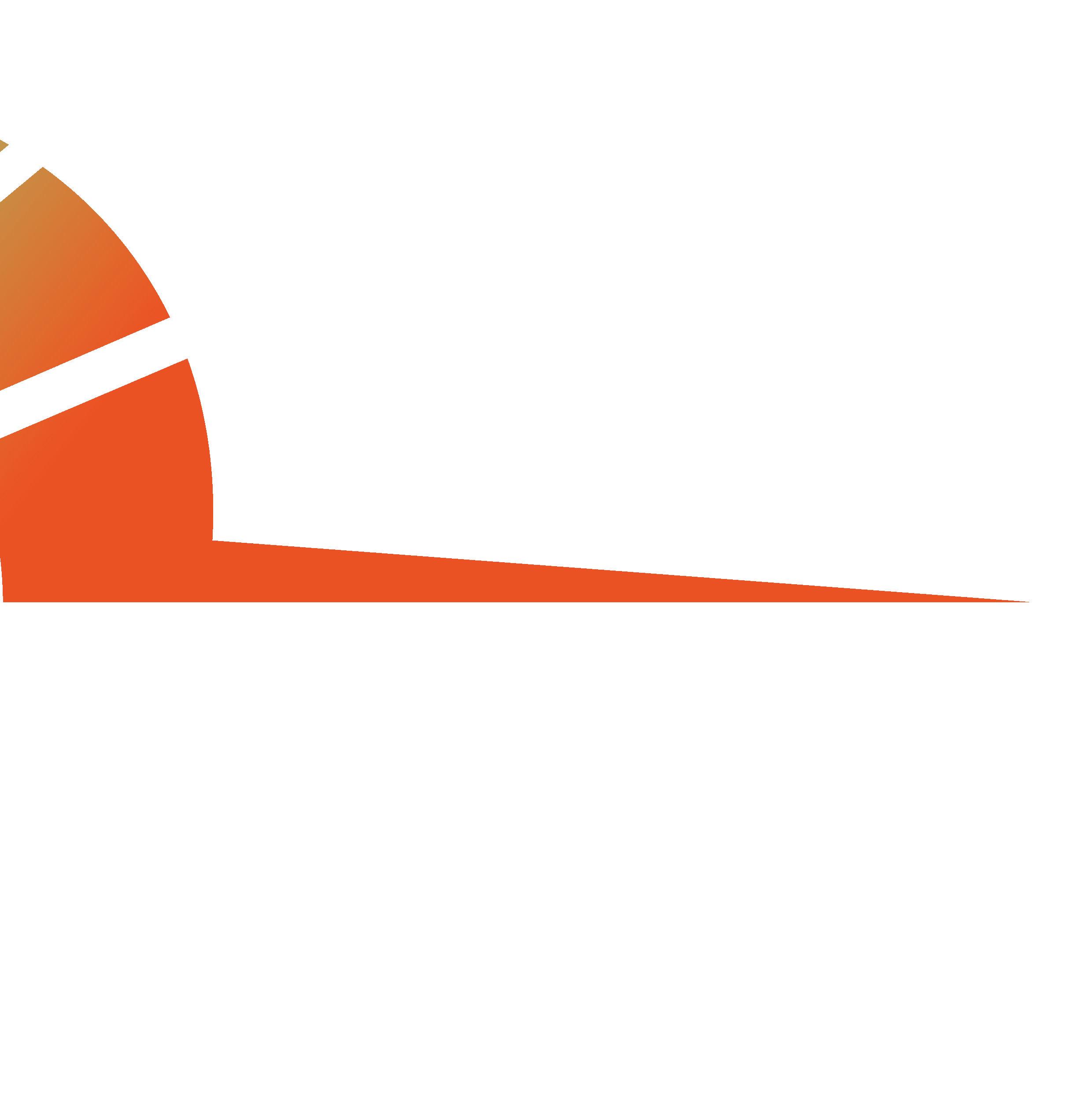
The pandemic was not our first punch in the face. You could say the first one came before our company started in 1948, when my grandfather, Ernie Daniels, came to Asheville, North Carolina to die. He suffered from tuberculosis. Back then, doctors prescribed clean mountain air as a cure. But, he did not die, and, like my father often liked to say, he had to find something to do so he started a company.
My grandfather was a businessman and an entrepreneur who did not take kindly to sitting still. Armed with just a steno pad, he took up shop on a bench at Pritchard Park and offered his typing services to local businesses. Later on, he cut a deal with a local law firm. He offered to do all of their typing in the mornings for free if they would allow him to use their typewriter and sell his typing services to other businesses in the afternoon. Before long, he saved enough money to buy his own typewriter and set up a small “letter shop” to serve the local community.
Daniels Secretarial was off and running. And even though his health stayed poor, the business grew. Much of its success can be attributed to his continual entrepreneurial spirit. In 1955, he expanded the company by purchasing an existing answering service provider from a blind woman who worked from her bed, retrieving calls from 10 phones by following the vibrations. The acquisition went on to create the first professional telephone answering service in Western North Carolina.
In 1956, the fledgling company became a part of the Diser Corporation, billed as the country’s first conglomerate. From there, the company incorporated as an independent firm in the State of North Carolina as Daniels Business Services Inc. in 1960. By 1965, my dad assumed the reins of the family business, eventually acquiring the largest printing company in town—Miller Printing.

As a regular at the company throughout my childhood, I watch as my father channeled our family’s entrepreneurial vision, always working to stay one step ahead and propel the company to success. In 1978, he expanded into the alarm monitoring central station market with Daniels Monitoring Service, which was among the first companies licensed by the newly established North Carolina Alarm Systems Licensing Board.
The “firsts” continued. In 1986, Daniels Business Services became the first to integrate printing, telecommunications and fulfillment. By 1993, we offered variable data documents using an in-house DOS based program written by our general manager at the time. By 2001, we developed an internal Information Technology group to help our customers better communicate their marketing messages through the technology available. In 2002, we added the first digital printing press in Western North Carolina to our service offerings, later becoming the state’s first Tri-certified printer for sustainability.
We started to realize in the early 2010s that it was less about the printed pieces themselves, and more about managing them. Getting the right pieces in the right
hands. Marketing departments we had worked with that were as many as 10 or 15 people deep were now a person and a half. They were tasked with all facets of their company’s marketing from print to trade shows to SEO. We leveraged our fulfillment experience to create internal online storefronts to manage collateral and trade show materials. The marketing portals enabled our customers to get out from under juggling materials and focus on business growth.
We lost Dad in 2016. After spending a lifetime watching and learning every move he made—through good and trying times—it was my turn at the wheel. After serving a stint as COO, I assumed control of the company as CEO, becoming the third generation of The Daniels Group to punch and counterpunch the way forward.
As a newly minted Woman Business Enterprise (WBE) and Woman Owned Small Business (WOSB) Certified by WBENC, The Daniels Group is as enterprising and resilient as it ever was. Hellbent on adding services and new technologies to improve our ability to communicate our customers’ messages in the most cost-effective ways, our mission is to grow your business. That means
"Our customers are not looking for a commodity job shop. They want to grow their business and they are open to trying new approaches, testing the market and finding out what works."
different things for different customers. One of our best qualities is that we are big enough to have a complex infrastructure, but small enough that we can be nimble.
So, when life decides to throw a punch, we are ready. Pivoting is not something that scares us. When the pandemic showed up and threw each of us around like rag dolls, we had to learn to limit our dependency on textiles packaging, a major focus of our business. We had to find different industries to serve in a time when it felt like the whole world went away.
At first, I thought we would just hunker down and ride this out. How long could this last—a couple of weeks at best, I figured. But then it started to sink in. Our forte is to meet every challenge head on. We had to completely refocus some of our key initiatives. Mainly that involved figuring out what others were doing to get through this and how we could help them do it. For example, when a North Carolina textile company moved quickly to make an antimicrobial mask, demand surged. But they did not have the infrastructure to meet that demand; we did.
With our normal lines of business gone almost overnight, we knew we had to use our strengths to meet what people needed. Things like this test your company’s mettle. While some of the changes will be in place until we get through this, others will be permanent. The choices to strengthen our company going forward is on all of us.
Our customers are not looking for a commodity job shop. They want to grow their business and they are open to trying new approaches, testing the market and finding out what works. Moving forward, we must continue to meet those needs. One of our core values is customer focus. That means we make business decisions
based on what our customers want. They move fast, because as we continue to see, things change fast. Our story has to meet their story.
So, we continue to evolve. Take our 24-hour call center. Because we offer a wide range of services, we can truly offer a complete suite of marketing support services. And while we do not have that many customers who take advantage of everything we offer, the few who do are really exciting to us. They are true partners. We love every one of the customers who show up and say, “What if we…” Our answer is always yes. All of our lines of business involve giving freedom to our customers. The freedom to focus on growing their business rather than being in the weeds.
Is today different? Yes. But we are not. Sure, wherever we land will be different. But that is because the needs of our customers are shifting. The type of print we are being asked to print is changing, but it is hard to know if it will stay there or change again.
What we know is that we will be ready to meet it wherever it is.


By Michael J. Pallerino
n his book, “The Road Less Traveled,” M. Scott Peck wrote: “Life is difficult. This is a great truth, one of the greatest truths. It is a great truth because once we truly see this truth, we transcend it. Once we truly know that life is difficult—once we truly understand and accept it—then life is no longer difficult. Because once it is accepted, the fact that life is difficult no longer matters.”
Greg Coticchia could not agree more. In a time when a global pandemic continues to cut an unfortunate path through every aspect of our lives, he believes the best course of action is to accept the reality and push forward. The award-winning technology executive with more than 30 years of experience in high-tech products and services says that adjusting your mindset and focusing on what lies ahead is your best path forward.
“Can you tell I am an optimist?” asks Coticchia, who currently serves the founding Executive Director for Carnegie Mellon University’s Master’s Product Management (MSPM) program.
If there is one thing that Coticchia has noticed more than anything is the huge divide the pandemic has created between the winners and losers. On one side, there have been layoffs, furloughs, pay cuts, suspended travel policies and budget freezes. On the other, there has been record growth, acquisitions and more companies going public.
“It's an enormous divide and a very different experience for everyone,” Coticchia says. “And it is all
happening at an exhilaratingly fast pace, combined with all of this uncertainty. It's a pace and associated risk the likes we have never seen.”
From a pure branding perspective, the key to surviving and even thriving in a time like this is to remain relevant or become even more relevant.
The real question is, “What the hell do we do now?”
From a pure branding perspective, the key to surviving and even thriving in a time like this is to remain relevant or become even more relevant. But there must be a balance. Moving too far away from your core to capitalize on the new environment can appear opportunistic, so it is important the move be carefully considered.
This is precisely the mindset that Mark Speece asks his clients to step into—pandemic or no pandemic. The founder of branding firm StokeSignals says for some organizations jumping into that mindset will be a step, not a leap. If your product and/ or service already is in line with the elevated or shifting demand, all you have to do is adjust your message or create a new product or service that highlights your relevance. Other organizations may need to fundamentally shift what or how they are selling or serving their market.
This, Speece says, is where the ice can get a little thin. “To make that transition and remain authentic, you must go back to the origins of your brand—the original inspiring idea of why you became a company or a product. What is at the core of your brand offering that is relevant today?”
This goes beyond product attributes and the quantifiable aspects of your brand and gets down to your vision and reason for being. A deep dive uncovers that intangible, often emotional, set of factors that were the impetus of your company and its offerings. Sometimes, brands discover they are poised to alter their behaviors in ways they might not expect, at least at first.
“When a move is motivated more by brand values than by brand capabilities, it looks less like Haynes making cotton masks and more like fancy upscale restaurants pivoting to offer reasonably priced family-style comfort foods or deliver food to healthcare workers,” Speece says. “One is repurposing of a brand capability; the other is the capability to find new ways to deliver on the brand purpose. Both are relevant. Both are genuine. And both are needed.”
In his book, "The Lean Startup," Eric Ries pioneered the idea of Build-Measure-Learn. The learning and feedback loop helps companies establish the barometer for how effective a product, service or idea is.
The basic methodology is one that Coticchia says any company can and should adopt in today’s perilous times. The lean startup is based on the scientific method: Get a hypothesis and test it, learn from the experiment, adjust and redo the experiment, i.e., buildmeasure-learn.
“There are opportunities out there,” Coticchia says, “but you need to look and listen. And more importantly, you must change. If you want things to be the same as they were, you’re toast—even

Assume nothing — All your assumptions need to be retested. Do not pull out your 2019 or 2020 spreadsheet. They are worthless.
Scenario planning — Do at least three scenarios with a Plan A , Plan B and Plan C. Be ready to enact any of them and/or portions of them.
Conserve cash — Cash is king whether you are succeeding or struggling during periods of rapid change.
Squirrel patrol — This may sound cruel, but it is a reality. Find all the nuts and let them go. If you do not need all those people on your team, it is time to move on.
Customer, customer, customer — Retain them. Talk to them. Listen carefully, they are the lifeline to your future.
Source: Greg Coticchia, Carnegie Mellon University’s Master’s Product Management (MSPM) program
Step1
Plan your experiment: learn, measure and build—including developing a formal hypothesis.
Build a minimum viable product, and test it.
Measure the results against your hypothesis to decide whether you can develop a viable business around your product.
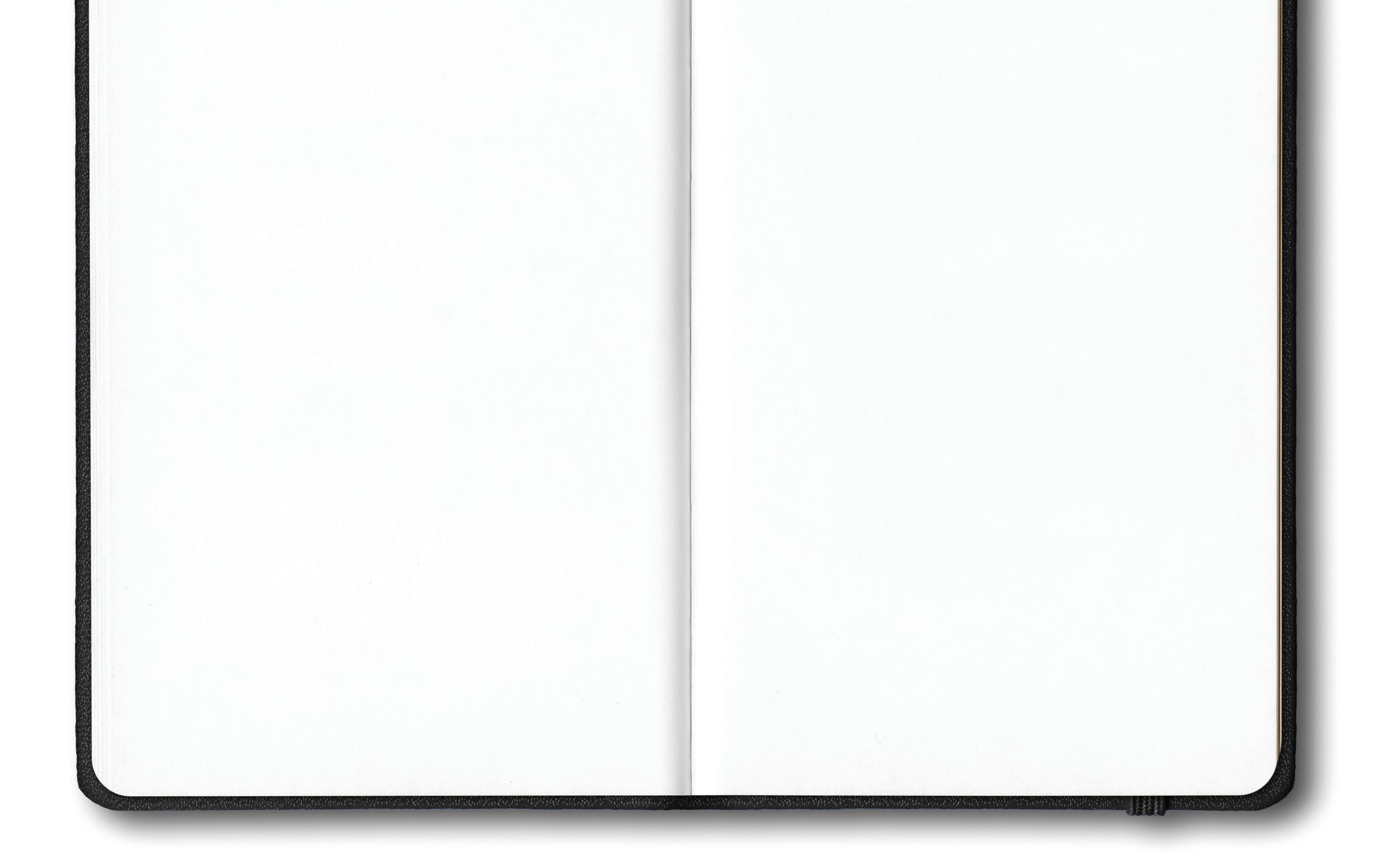
if you are succeeding right now. That won’t last either. All your assumptions about what works and what doesn't need to be looked at and asked about again. Don’t assume anything.”
Given the pace of the change, Coticchia says you needed to start this process yesterday. The opportunities to apply what you do and the value you have to the world are in front of you if you listen to your customers’ problems and new situations they face. “That means listening for problems and figuring out how you add differentiated value to solve them.”
If you are looking for a cheat sheet, go back to the basics. Coticchia says the today’s business landscape has impacted everyone, creating a new set of problems that your business may be the only that can solve. He recommends
Learn from your results, and decide whether to persevere or pivot.
Cycle back to the beginning, and keep on going around the loop as you develop your product.
The biggest advantage of this technique is that it minimizes the risk and cost of creating products or services that no one wants, and helps you to "zero in" on something that customers will embrace.
Source: Eric Ries, “The Lean Startup”
"Everything you think
you
knew, you don't anymore. The
assumptions you based your business on have changed. You need to reevaluate where you add value."
— Greg Coticchia, CMU’s Master’s Product Management (MSPM) program
doing some basic customer discovery like you did when you started your business from scratch. Speaking with your customers is an extremely powerful, informative tool to validate assumptions on customer segments and their problems. Customer discovery interviews also will equip you with insights to define a unique value proposition for a solution for which there is an actual market need. And adjust your business accordingly.
“Everyone’s world is upside down and changing rapidly,” Coticchia says.” Everything you think you knew, you don't anymore. The assumptions you based your business on have changed. You need to reevaluate where you add value."
That last part circles back to what Speece says is critical— understanding your brand. “A strong brand is poised to pivot. It knows what it is; what it stands for and where its strengths lie. Even in uncertain times, when it is impossible to predict what the next year or even the next month will hold, your brand should know what to do and how to respond. Your brand is its own compass.”
Follow that compass, and you may find where the road leads.
Like everything affected by COVID-19, the sales process is facing change. Finding your way through the new and rocky landscape can seem daunting. We sat down with some industry leaders to get their take on the ever-changing sales process. Our panel includes RJ Hines, Head of Sales and Marketing, Vision Graphics; Lisa Arsenault, Senior Vice President of Sales, Lake County Press; David McNerney, Vice President of Sales and Marketing, Think Patented; and Paul Soltysiak, Sales Consultant, Holland Litho Printing Service.

What do you anticipate as the biggest changes in buyer behavior going forward?
RJ HINES: Virtual meetings will become the norm. It’s not just about using video technology; one must be more able to provide compelling information, data and share files that are meaningful to their clients.
LISA ARSENAULT: Clients are super distracted with everything going on. They seem to have adapted quickly. I think loyalty to existing relationships will increase since it’s more difficult to connect and establish new ones unless you have a really compelling reason to meet.
DAVID MCNERNEY: I am concerned that the longer clients work from home and do business without meeting with their vendors, the more comfortable they become with buying online, which changes the buying process. This makes it more difficult for us to truly understand a client’s challenges and needs, which also makes it more difficult for a company to offer better alternatives. Will the buyer only reach out once they are ready?
PAUL SOLTYSIAK: Much less direct contact and more difficulty in meeting face-to-face, since many will avoid physical contact, and many will continue to work remotely.
How have you been engaging with clients?
HINES: Virtual meetings now account for 80% of our client and prospect contact.
ARSENAULT: A lot more Zoom and phone calls. I’ve only had a few on-site meetings.
MCNERNEY: The current times certainly have made this hard. We were quick adapters to video. We are communicating via phone, email, social media, Zoom and Teams. We are also using one-way video in our outbound prospecting and basic follow-up messages and have heard very good feedback on this tactic. While clients may not be buying as much now, we are making the point to communicate as much as we can so that we are top of mind when they need us.

SOLTYSIAK: I had already changed my methods, prior to COVID-19. On a project basis, the average job has become smaller, and more frequent. Speed and efficiency are key. Therefore, I’ve made it a point to minimize downtime with driving and travel. I am very selective in setting up face-to-face meetings. While a physical meeting can often be beneficial, most things can be done via email and occasionally with Zoom—or over the phone, of course. However, I rarely use my phone as a phone! I do my best to be as responsive as possible.
What tactical sales processes do you believe will continue as part of your plans for the foreseeable future?
HINES: Developing compelling email campaigns with a phone call follow up.
ARSENAULT: We will be using every channel available to us to communicate and stay connected. The companies that offer full service from design, storefronts, merchandise, digital, wide format and fulfillment are well positioned to offer the most to clients.
MCNERNEY: Be persistent and put out good content.
SOLTYSIAK: Using online data to help cultivate good prospects. Using digital tools to engage—including social media. I also enjoy sending physical samples to prospects and customers.
HINES: If people are still starting out their days thinking they will go door to door—if this practice isn’t already dead—it certainly will be.
ARSENAULT: Connecting at events has changed, maybe not forever, but they won’t be the same for a long time.
MCNERNEY: I don’t know if any specific tactic is gone. Some may think the old way of sales is gone and needs to be replaced with a “new” way. I don’t subscribe to this. It’s similar to what we talk to our clients about when discussing their marketing efforts. It’s a combination of proven and old school methods
coupled with new school methods. When combined we see an exponential lift. Today’s rep needs to know about omnichannel marketing, but I guess I would call it omnichannel selling.
SOLTYSIAK: “Just stopping by.” If it was tough to get past the gatekeeper before, it’s nearly impossible now. And many aren’t in offices now, anyway.
HINES: It is no different. However, we use the video portion of Zoom and GoToMeeting.
ARSENAULT: By really understanding their business and their competitors before making the first touch. Creating ideas that can generate awareness for their business and help them create new ways to generate revenue where there wasn’t any before.
MCNERNEY: Trust and confidence will always be at the core of why a buyer buys. How we establish it is certainly more difficult than with the traditional sales process. However, in some respects it has become easier. On one hand, trust was built through relationship selling, which has become more difficult. The in-person meetings, lunches and golf are gone or at least reduced for the near future. However, technology, social media and the ability to instantly connect with someone allows us to ask for and receive referrals, and the option to share reviews; if done correctly this can help create a level of instant trust.
For a sales person, I think personally branding yourself as an “expert” in a specific area, as well as using your referral network will be key to establishing trust. For a company, this will be harder. Our goal is to be considered a thought leader in our space. This takes time to establish. Good content helps us to establish and start to build a relationship with trust. Finally, it will be imperative that the company online profile, social media, website and reviews be buttoned up.
SOLTYSIAK: In similar ways as the past. With honesty and helpfulness. These qualities do not require physical contact!
The world may look different after this crisis, but we will still have a need to learn, connect, build, understand, and plan for our future."
— Larry Montague, President and CEO of TAPPI, on moving forward after the pandemic
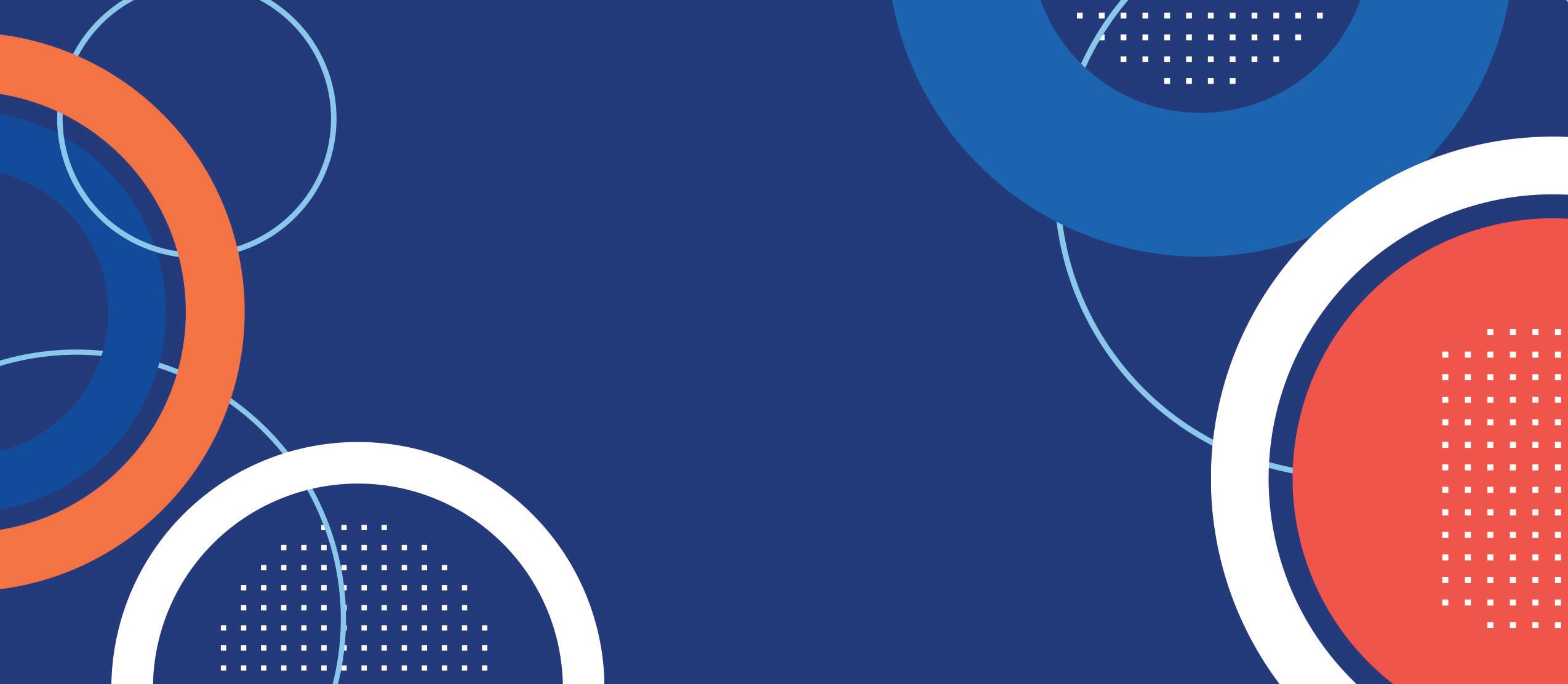
Book revenues show print outpaces
Bookworms, take note: readers prefer print. According to the insights gathered in APTech’s August Business Intelligence Brief, “News and Information Generational Readership,” Gen Xers and Millennials read print about 15% more than they read e-books over the past month, with Boomers reading print 30% more than they read e-books. Book revenues in 2019 totaled $25.9 billion, according to the Association of American Publishers. Trade represents almost two-thirds of

total revenue, a share similar to newspaper advertising, but much less exposed to competitive or technological pressures given the diversity of fiction and nonfiction titles included in the segment. The share of revenue between hardback and paperback are similar and collectively account for three-quarters of total revenues, outpacing the electronic sources such as e-books and audio books. Take a look at the breakdown of revenue by type and format:
Revenue by format
Audio 8%
Other 5%
Source: Association of American Publishers
How COVID-19 continues to impact the U.S. economy
COVID-19 continues to disproportionately stress small to midsize businesses, non-essential industries and front-line service workers, according to APTech’s “The Impact of COVID-19 on the U.S. Economy and Print” report. How the challenges and opportunities are navigated will determine when and where a business will find their new normal. Some changes may include shifting to online operations, expanding offerings from products to solutions, or creating new opportunities in other industries.
Overall, printing and paper are recovering, but it will take time to return to the levels enjoyed in 2019. The speed of their recovery will be largely determined by the industries they serve and the solutions they offer them. Growth was seen in some areas of printing and paper, as noted in July by the Institute for Supply Management’s (ISM®) Report on Business®. Check out what areas are seeing growth:

VP of Sales & Marketing, Casey Printing
Ryan Casey likes to tell people he has magenta ink running through his veins. When you are a fifth generation printer, the image is not hard to imagine. As a child, he watched his father and uncle transition Casey Printing from a newspaper publisher to one of North California’s most respected commercial printers.
The magenta ink line is another spin on the “hands on” learning he took in every step of the way. His great, great grandfather started the company as a newspaper in 1901, so the family business has a deep set of roots in the business. As soon as he was old enough, Ryan signed on as a landscaper’s assistant, eventually working his way to prepress duties.
After graduating from Cal Poly with a Graphic Communication degree, he immersed himself in the industry with jobs at both HP and Esko. “It was an amazing experience. I was exposed to many different aspects of our industry," Ryans says. "I was fortunate to meet and learn from some of the most brilliant minds in printing and packaging. Many of my customers were family businesses, and that lead me back home.”
As VP of Sales and Marketing at Casey Printing, Ryan is responsible for account management and new business development through direct outreach and marketing activities. And because it is a small family business, he helps out in a lot
Ryan Casey plans to lead the family name into another generation
other areas, from estimating to production to digital printing.
When the pandemic hit, Ryan reflected on the myriad peaks and valleys the Casey family faced over the years. While previous generations saw a growing print industry, they had their challenges. “It is really hard to see the forest for the trees when times are tough,” Ryan says. “Helping everyone understand what the end game is especially important in keeping people engaged.”

incredible paper options to digital printing that looks as good or better than litho, to foil stamping to laser die cutting."
And the Casey legacy? Would you believe the next generation is here. His son, representing the sixth generation, will have his opportunity to take the reins when the time comes, "If that is what he wants,” Ryan says.
We need to do what we can to stick together, share ideas, and educate everyone we can about the value of what we do.”
His generation is trying to navigate a shrinking industry, a fact Ryan accepts as he heads into the uncharted waters of the future. “I think that in the context of a business, great leaders communicate a clear vision of the future, help employees see where they fit in that vision, then provide them with the tools they need to make it come true.”
As he looks to the post-pandemic landscape, Ryan views print as the best marketing tool out there. Providing someone with a physical thing, whether it be direct mail or packaging, is powerful. Ryan says we must educate customers on the advantages of print rather than racing downward with cutting costs and accepting less margins. “Our industry has amazing technology—from a multitude of
In a time when the print industry continues to evolve, the like-father-like-son approach continues to work for the Casey family legacy.
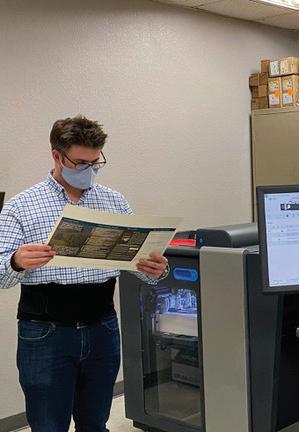



The quality and versatility of Lynx ® ensure that every page and every piece prints well. Runs are smooth on press, with vivid color reproduction and uniform coverage. Whether printing offset, production inkjet or digital—Lynx ® is a paper you can stake your reputation on, no matter what you’re printing.
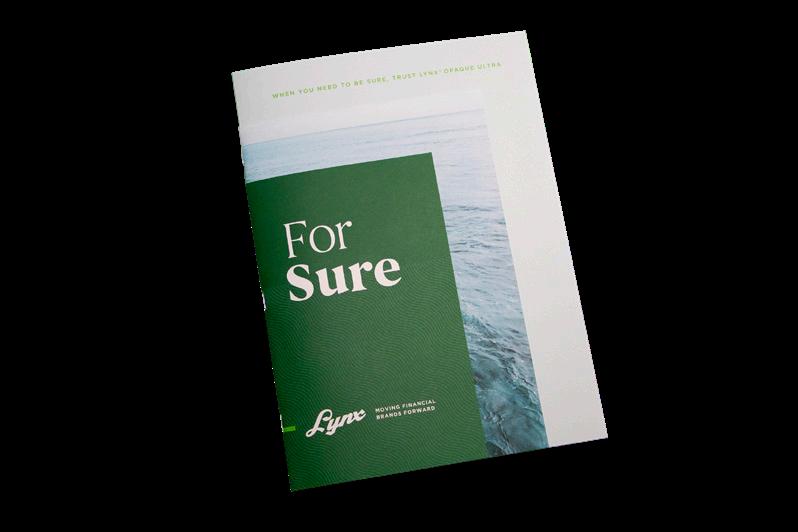
Request the latest Lynx printed sample at https://info.domtar.com/forsure

lexibility. Humility. Perspective. If you are looking for a strategy to define how today’s print companies can persevere and build a business of the future in today’s unprecedented landscape, Mark Friedman says you can start there. Being flexible, having a little humility and finding perspective amid the chaos are all bankable options. But Friedman, director of marketing for the Dietzgen Corporation, says that the industry’s compass forward does not fully center on the pandemic. If you think about it, over the past 25-plus years, everyone, everywhere has been musing about how the business has changed “over the past five to 10 years.” The mantra runs on an endless loop.
“I don’t think it is just the pandemic, although that has certainly accelerated many of the aspects of the business transition we are currently experiencing,” Friedman says. “Without a doubt digital—for everything that the term means—is cutting into what has long been sacred print applications. But print is resilient and an incredibly adaptable medium. So for every application that seems to shrink, another one seems to be expand. It may not use the same technology, the same products or be supported by the same businesses within the industry, but that is part of the evolving story of print.”
As the industry treks forward and a new generation assumes the mantle of responsibility, there must be an inherent value placed on print’s stark contrast to its rival—digital. Print is tangible and long-lasting, while digital messaging is often short lived. Print is personal; digital is superficial and impersonal.
“No matter how personalized a digital communication is, you always know in the back of your mind that it is technology or automation that personalized it,” Friedman says.
So, in order to be successful and continue to be relevant in the future of print, the industry needs people who are able to see past the current products, applications, processes, workflows, etc. But that strategy does not come without challenges. “To steer a business through uncertainly requires a team that believes in each other—one willing to take changes, make mistakes, admit their mistakes and still try again,” Friedman says. “A team that is willing and has the desire to change and adapt, and to look at things from a different perspective.” Do that and we will come out stronger on the other side.”
When it comes to print, Christopher Siebert says the industry must adopt a continual, proactive drive to re-think fundamental assumptions of how it helps customers reach their target audiences. The president and CEO of Almaden Global says that this drive must be an ever-present strategy, not one contrived during times of crisis only.
“Humans are social and tactile creatures who seek and respond well to new, unique experiences,” Siebert says. “But people are selective, too, and will only invest their time and emotionally connect

"While we do have some guardrails on decision-making, we seek to empower employees at all levels to think big and different and look for opportunities to continually improve how we deliver value."
— Christopher Siebert, President & CEO, Almaden Global
in trusted situations. Tangible, branded collateral is central to delivering that much deeper, richer experience and forming a bond of trust.”
That starts by defining who you are and what you do up from the jump. More than just a print company, Almaden’s focus is to deliver the brands it serves—some of the most recognizable companies and organizations in the marketplace—via myriad technologies, including print. Its success lies in its ability to blend creativity and execution. “It’s not just about helping our customers bring their branded ideas to life, but also delivering them seamlessly and efficiently at the highest quality across the globe,” Siebert says.
Innovate. Execute. Recruit. Repeat.
To seamlessly deliver what your customers need, when they need it, takes having an open mind to the resources and people needed to make that happen. It also takes innovation. To culturally infuse innovation, all aspects of your company must be aligned to rewarding creativity and risktaking, and evaluating impact and scaling what works.
Denny Shorett, president of Crown Connect, says the print industry will have to take a much different look at the talent and caliber of people needed for the future. He believes there will be little in the future of print that will remain "traditional."
“The employees we must attract will need to be team players with the ability to think outside the box, offer bright ideas and have the ability to offer constructive feedback,” he says. “Qualified employees will likely demand a higher wage as well.”
"The employees we must attract will need to be team players with the ability to think outside the box, offer bright ideas and have the ability to offer constructive feedback."
— Denny Shorett, President, Crown Connect
“Everything we do is fundamentally aligned with these aspects,” Siebert says. “While we do have some guardrails on decision-making, we seek to empower employees at all levels to think big and different and look for opportunities to continually improve how we deliver value.”
Siebert says as any rapidly-evolving industry, the print world needs people with fundamental aptitude and abilities around creativity and execution. The key is being able to attract people who embody those attributes. For example, universities with solid programs in graphic design and communications are great environments to recruit.
“We hire and teach them the technical aspects of what they need to know,” Siebert says.
With a pandemic still wreaking havoc on every aspect of our lives, the print industry—along with everyone else—is heading into uncharted territory. If there is one consensus that every industry professional can agree on it is that “normal” will be hard to define. With that premise will come a renewed effort on recruiting and educating the industry’s masses.
“Selling print, mailing or other graphic solutions that our industry provides will not be accomplished by selling,” Siebert says. “Education is the (not so) new factor needed if we stand any chance of getting people interested in [what we do]."
Siebert refers to the situation as print's double whammy. Over the last two-to-three years, just has the industry was beginning to recover from digital as the fix-all solution to replace print, the pandemic hit.
"This time it will be [harder] to bring print back from its grave," Siebert says. "It will be a time when we will need to help our customers regain their confidence in their own ability to rebuild their businesses within their marketplace. We will need to partner with them to help them find the right solution, whatever it may be.”
It will be a job for the new stewards of print.
Cedar Graphic’s Hassan Igram on leading beyond the pandemic
Hassan Igram began his life in printing shortly after his father, Charlie, purchased The Lawrence Press, situated in downtown Cedar Rapids, Iowa in October of 1979. Upon his mother’s urging to put school on hold and “help out your father for a bit” to get the business regenerated, he has never looked back. Forty years later, it has been quite the journey—one that he does not regret for a minute. After buying out his father, Igram changed the name of the company to Cedar Graphics, Inc. and he now serves as the Owner and CEO. To this day, running the company is a family affair. Igram’s wife Salma (CPA) is the majority owner and the company CFO while their son Humza is the President and in charge of operations.
Besides his family connection, Igram was motivated to pursue a career in print due to his interest in business and his talent in fine arts. Hassan attended the University of Wisconsin Madison and is currently working toward earning a BFA at the University of Iowa. His business philosophy is quite simple: produce the highest quality product time after time, meet or exceed customer expectations for service and delivery, and charge a fair price. Igram has served as Chairman on both the Printing Industry of the Midlands BOD as well as Printing Industry Midwest for over 20 years. He was awarded the Iowa Distinguished Printer of the year in 2008, and was recently recognized as the 2020 Graphics Arts Industry Leader of the Year by Printing Industry Midwest. Cedar Graphics boasts a multitude of awards including regional trophies, Gold Ink and
Premier Print Awards. LeadingPRINT sat down with Igram to get his insights on where print and marketing is heading.
What do you see for the future of the print and marketing services industry?
Stagnant or declining for print providers that are legacy printers and those who are not forward thinking or do not have the capital necessary to expand services such as in e-commerce, wide format, digital on demand and production inkjet.
The CEO’s and presidents of most successful companies will tell you this, but I truly believe we have as good a group of people as we could ask for.
What challenges has the pandemic presented to your organization?
How are you overcoming them?
Not being able to meet in-person with our clients as frequently as we would prefer. Probably the biggest challenge our customers are facing is the uncertainty of their markets. Retail box stores need to receive product and ensure their customers and employees stay safe; higher education is challenged with whether students will be on campus or not, as well as missing out on sports and on-campus housing revenues. As for Cedar Graphics, we have and always will be focused on employee safety. We provide masks, keep exterior doors locked and interior doors open, constantly sanitize and remind our employees to social distance from others. For two months many of our employees worked from home, and some still do. The challenges we face are synonymous with what our customers are facing every day.
What is one thing that leaders should be doing right now?
Conserve cash yet market aggressively through direct mail and social media. Be a responsible steward in your community. Make face shields and masks although this is somewhat old news now, and be politically agnostic. Now is not the time to pick sides (at least publicly) and alienate customers and employees. Some owners are too aggressive and insensitive in expressing their political views.
What have you learned about yourself as a leader during this pandemic?
Managing a company through a sales revenue drop, particularly for our company which was having a record year in sales and profits, is tough. But protecting employees and their families is even more of a challenge and quite stressful.
What kinds of things don’t you want to come back in the post-corona landscape?
People have differences in opinion on the severity of this virus and act accordingly toward it. I want people to trust the science and company leadership when they are trying to protect them. For the most part, our team has behaved admirably. I hope people who have health conditions change their behavior to protect themselves by watching their weight, eating healthy and practicing safe hygiene. This will not only protect them, but their loved ones, friends and fellow Americans.
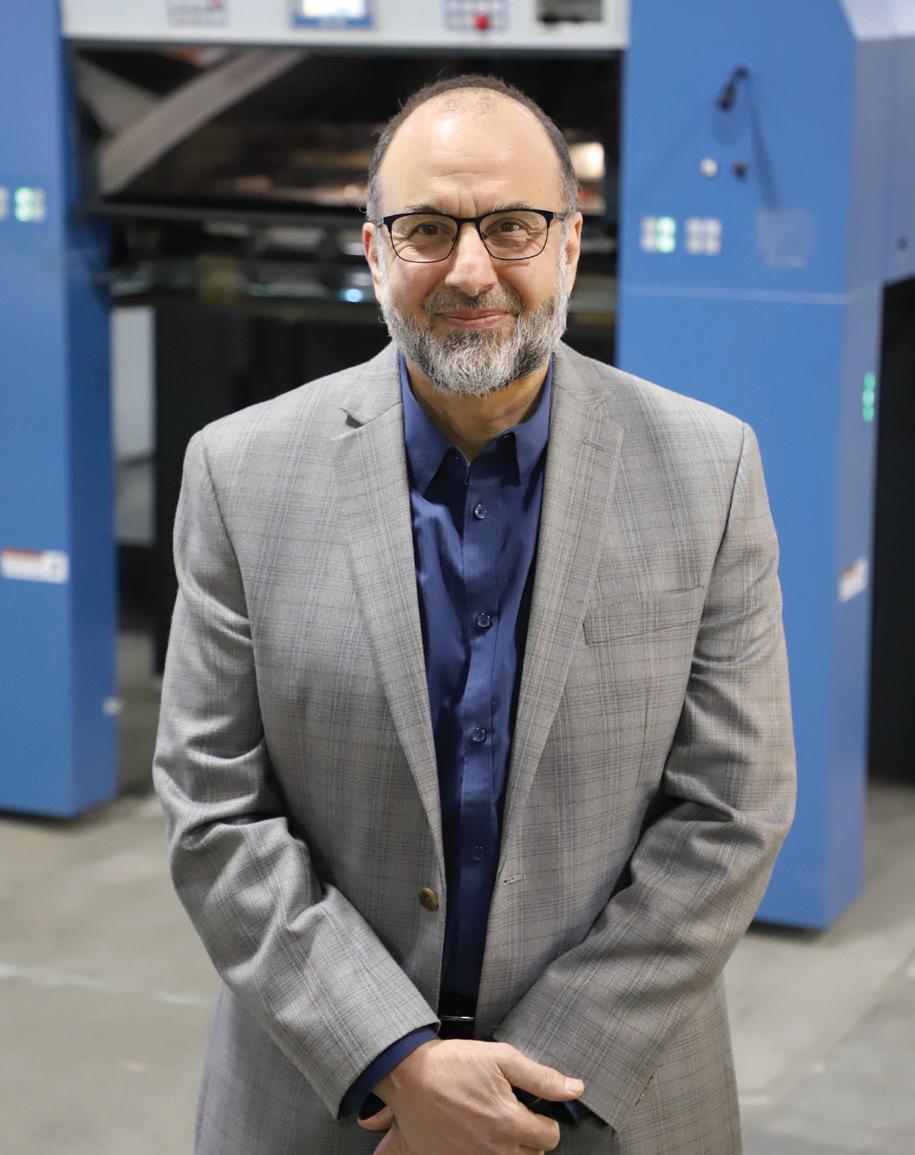
Tell us about your people and what differentiates them?
The CEOs and presidents of most successful companies will tell you this, but I truly believe we have as good a group of people as we could ask for. When we looked at cutting costs to match our declining revenue, we decided to temporarily cut work week hours and encourage them to take earned vacation time. Our team was supportive, patient with our policies and continued to work hard. They are truly the best!
"Be a responsible steward in your community."


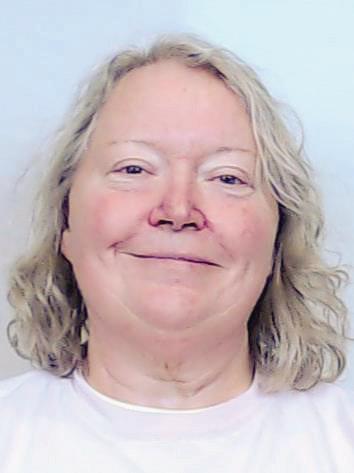



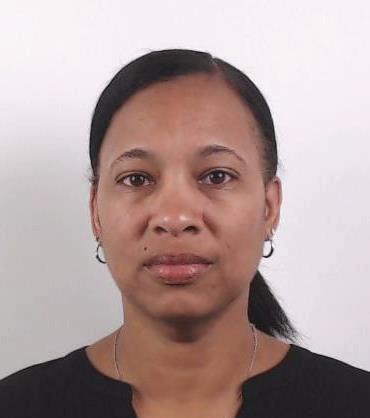

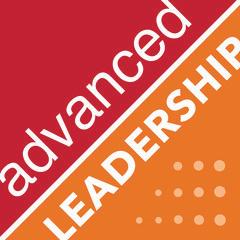

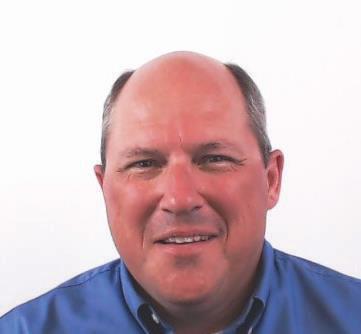


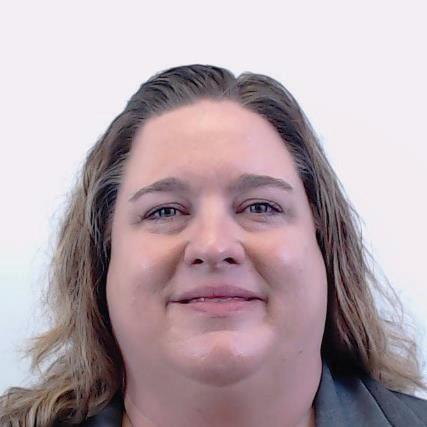

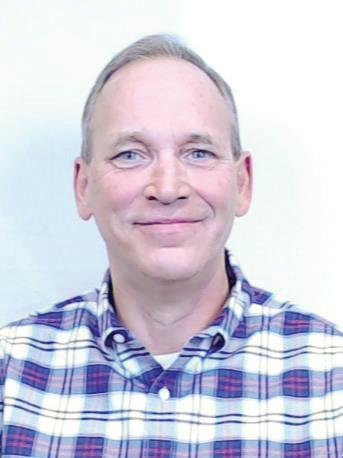
The Association for PRINT Technologies (APTech) is proud to announce the names of those individuals who have successfully completed the LeadingPRINT Advanced Leadership Certificate Program taught by George Mason University School of Business professors.
These outstanding leaders have dedicated themselves to building a future for their businesses and the print industry
To find out more about this program and others like it contact Ken Garner at kgarner@aptech.org.

